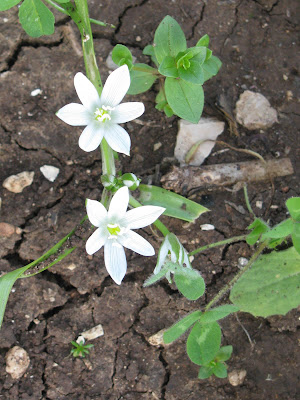The memorial site includes two half-tracks and an AMX-13 tank which was damaged by the Egyptians during the Six-Day War. It was originally erected near Refidim in Sinai and in 1980, prior to the evacuation of Sinai following the peace agreement between Israel and Egypt, the monument was moved to the outskirts of the Kula Forest. Following road construction 500 metres east, the monument was renovated ahead of Israel's Remembrance Day in 2018.
A path with the green and black badge of the Egrof Varomach brigade on both sides leads to the memorial site. At this site, a wide plaza is enclosed by a fence and there is a large seating area. Beside the half-tracks and tank, there is a sign with details in Hebrew and English about the brigade and the battles in which it participated. Above the sign is the badge of the unit, at the top of which is the word Yizkor, "Remember". A memorial wall bears the names of the fallen.
The Kula forest offers another memorial, nature, ruins and even a Roman mausoleum. We last explored it in August 2020. This time, after visiting the Egrof Varomach memorial, I had a lovely time photographing the early Crown anemone and Persian cyclamen, which were just beginning to bloom. I also spotted Arisarum vulgare, or Friar's Cowl, an unusual-looking wildflower which is a member of the Arum family and occurs in the Mediterranean region from October through until March.
There were just a few beautiful anemone, or calaniot in Hebrew, to be seen. A few weeks later and no doubt the fields are now covered with magnificent carpets of bright red, with the odd white, purple and pink head scattered between them. Anemone have a symbolic place in Israeli culture as well as a natural one. During the time of the British Mandate, the term was attached as a nickname to the British soldiers, due to the bright red colour of their berets. A song about the flowers, written by the Israeli poet Nathan Altermann in 1945 and made famous by the Yemeni-Israeli singer Shoshana Damari, then became used as a protest song against the British. The song, about the life of a young girl and about anemones which are always blooming all her life long, is one of the most played, performed, loved and cherished songs in Israel today.The Persian cyclamen, or rakefet in Hebrew, is one of the popular winter flowers in Israel. It is a delicate flower, but it can grow almost anywhere, even in rocks and shady forest groves. Cyclamen bloom throughout late winter and into spring, adding a touch of beauty to cool-weather hikes. They range in colour from pale pink to deep purple. Its petals grow upward instead of outward, so the flowers look like they're stretching up to the sky. It is said that King Solomon saw the cyclamen as the model for his crown, and one of the Hebrew nicknames that has stuck to it is "Nezer Shlomo," King Solomon's crown. The tubers at the root of these cyclamen plants have historically been used to make soap.
The Palestine iris, or Iris eretz Israeli, below, is a white to yellowish flower, though in the south of Israel, light blue specimens can be found growing in the warm dry conditions. It is a low-growing plant rising to a height of 13cm. The fragrant flowers are short-lived, produce nectar and are known to bloom in the morning. It was first found in Mesopotamia, part of Syria, and has been used as a medicinal plant in the Middle East for urinary tract infections by boiling the leaves or the rhizomes in water.
The Kula forest, which was planted in the 1950s, actually has three names. The first name, Kula, is after the Arab village of Quleh which once existed in the western section of the forest. It was deserted during the 1948 War of Independence and the ruins of crumbled houses and terraces now lie among the trees. The forest is also know as the Koah Forest or Forest of the Kaf Het. In gematria (a Jewish form of numerology in which the letters of the Hebrew alphabet are substituted with corresponding numbers) Koah is 28. 28 soldiers from the Alexandroni brigade died in a battle on the 15th July 1948, when Jordanian forces with tanks returned to the conquered Quleh village and killed 28 Jewish soldiers. The village returned to Israeli control on the 18th July. The name Koah commemorates the soldiers. Finally, it is also known at the Elad Forest since it is located by the city of Elad, which was established in 1990.
After exploring the area of the forest near the Egrof Varomach memorial, we crossed the road and parked near the Alexandroni memorial, above. At the memorial we found a short description of the battle that occurred during the War of Independence, when the IDF and Arab Legion forces fought over the village. A monument with the names of the fallen engraved on it is located on top of a hill and, if you look down below, you can see the remains of trenches the fighters used during the battles.
* This post has been shared on Little Things Thursday, Wordless Wednesday (on Tuesday), Tuesday's Treasures, Pictorial Tuesday and My Corner of the World.





















































13 comments:
Thank you for the peek into such a beautiful place, and the history that hides behind every flower.
I love all the flowers and the monument. It would be a nice place to sit quietly and think.
History and natural beauty converge in one spot!
What a beautiful place. Thanks for sharing it with us.
What a fascinating place and an interesting juxtaposition between the military and nature. I loved finding out about the cyclamen tubers being used for soap and the Iris for UTIs. Thank you for taking us along. xx
What beautiful flowers! How wonderful to get to combine nature walk with history lessons.
What a peaceful garden to sit and reflect x #mmbc
Except for the War of Independence, I personally remember each of the other wars being memorialised. But I have not heard of Kula Forest. Where is it?
These are beautiful photos. I love cyclamen but mine never last more than a season. I'd love to find a perennial version that works in my garden :)
#MMBC
Wonderful memorials to visit. The wild flowers are so beautiful. I adore cyclamen!
...the flowers are a treat to see as I look out my window at the falling snow.
What a gorgeous place that you shared today! Love the photos and the info, too.
Thanks for sharing your link at My Corner of the World this week!
The flowers add such a nice touch to the memorial, and also to the park.
Post a Comment